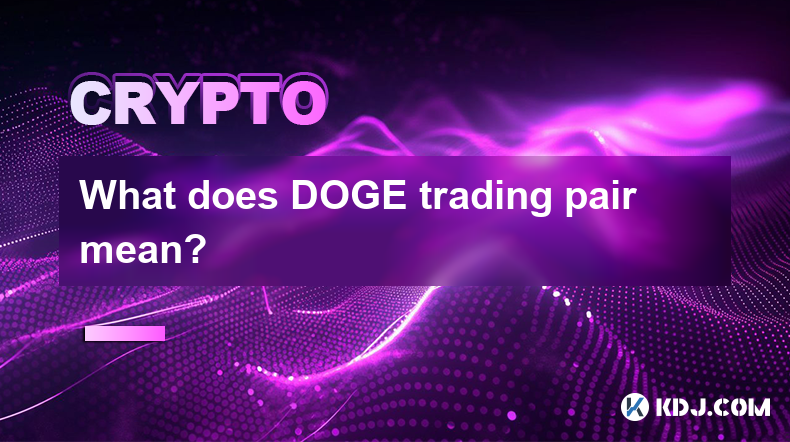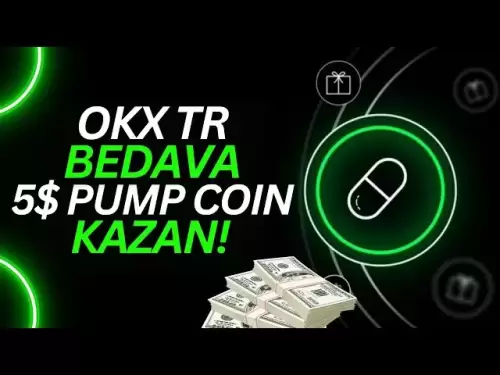-
 Bitcoin
Bitcoin $117400
-0.46% -
 Ethereum
Ethereum $3768
0.60% -
 XRP
XRP $3.551
2.09% -
 Tether USDt
Tether USDt $1.000
0.00% -
 Solana
Solana $203.2
11.30% -
 BNB
BNB $770.9
1.92% -
 USDC
USDC $0.9999
0.01% -
 Dogecoin
Dogecoin $0.2709
-0.02% -
 Cardano
Cardano $0.9024
4.49% -
 TRON
TRON $0.3139
0.60% -
 Hyperliquid
Hyperliquid $45.60
-1.41% -
 Stellar
Stellar $0.4730
-1.34% -
 Sui
Sui $4.025
2.15% -
 Chainlink
Chainlink $19.79
2.19% -
 Hedera
Hedera $0.2724
-2.39% -
 Avalanche
Avalanche $25.93
3.05% -
 Bitcoin Cash
Bitcoin Cash $524.0
-1.83% -
 Shiba Inu
Shiba Inu $0.00001558
0.50% -
 Litecoin
Litecoin $116.7
-0.30% -
 UNUS SED LEO
UNUS SED LEO $8.996
0.00% -
 Toncoin
Toncoin $3.334
1.83% -
 Polkadot
Polkadot $4.506
0.34% -
 Uniswap
Uniswap $10.99
4.83% -
 Ethena USDe
Ethena USDe $1.001
0.03% -
 Pepe
Pepe $0.00001461
3.17% -
 Monero
Monero $320.3
-1.01% -
 Bitget Token
Bitget Token $4.935
0.36% -
 Dai
Dai $0.9998
0.00% -
 Aave
Aave $322.4
-1.25% -
 Bittensor
Bittensor $455.6
9.33%
What does Bitcoin trading pair mean?
DOGE trading pairs enable trading DOGE against other assets like BTC or USD, offering flexibility and liquidity but also carrying risks due to market volatility.
Apr 20, 2025 at 03:01 pm

What does DOGE trading pair mean?
In the world of cryptocurrencies, a trading pair is a crucial concept that facilitates the exchange of one digital asset for another. When it comes to Dogecoin (DOGE), a trading pair involving DOGE allows users to trade DOGE directly against another cryptocurrency or fiat currency. Understanding what a DOGE trading pair means is essential for anyone looking to engage in trading activities involving Dogecoin.
The Basics of Trading Pairs
A trading pair is essentially a quotation that shows how much of one cryptocurrency is needed to purchase a unit of another cryptocurrency or fiat currency. For instance, a DOGE/BTC trading pair indicates how many DOGE are required to buy one Bitcoin (BTC). Similarly, a DOGE/USD pair shows how many US dollars are needed to acquire one DOGE. Trading pairs are the backbone of cryptocurrency exchanges, enabling seamless transactions between different assets.
Types of DOGE Trading Pairs
DOGE trading pairs can be categorized based on the asset they are paired with. The most common types include:
- DOGE/Fiat Pairs: These pairs involve trading DOGE against fiat currencies like USD, EUR, or JPY. Examples include DOGE/USD and DOGE/EUR.
- DOGE/Crypto Pairs: These pairs involve trading DOGE against other cryptocurrencies. Popular examples include DOGE/BTC, DOGE/ETH, and DOGE/USDT.
- DOGE/Stablecoin Pairs: These pairs involve trading DOGE against stablecoins, which are cryptocurrencies pegged to a stable asset like the US dollar. Examples include DOGE/USDT and DOGE/DAI.
How DOGE Trading Pairs Work
When you engage in trading using a DOGE trading pair, you are essentially buying or selling DOGE in exchange for the other asset in the pair. Here's how it works:
- Buying DOGE: If you want to buy DOGE, you would place a buy order on a DOGE trading pair, such as DOGE/BTC. You would use your BTC to purchase DOGE at the current market rate.
- Selling DOGE: Conversely, if you want to sell DOGE, you would place a sell order on a DOGE trading pair. For example, on a DOGE/USD pair, you would exchange your DOGE for USD at the current market rate.
Choosing the Right DOGE Trading Pair
Selecting the appropriate DOGE trading pair depends on various factors, including your trading goals, the liquidity of the pair, and the fees associated with trading on that pair. Here are some considerations:
- Liquidity: High liquidity ensures that you can buy or sell DOGE quickly without significantly affecting the market price. Pairs like DOGE/BTC and DOGE/USDT typically have high liquidity.
- Fees: Different exchanges charge different fees for trading on DOGE pairs. It's important to compare fees to maximize your trading efficiency.
- Trading Goals: If you're looking to convert DOGE to fiat, a DOGE/USD pair might be more suitable. If you're interested in trading DOGE against other cryptocurrencies, a DOGE/BTC or DOGE/ETH pair could be more appropriate.
How to Trade DOGE Using a Trading Pair
Trading DOGE using a trading pair involves several steps. Here's a detailed guide on how to do it:
- Choose an Exchange: First, you need to select a cryptocurrency exchange that supports DOGE trading pairs. Popular exchanges include Binance, Coinbase, and Kraken.
- Create an Account: Sign up for an account on the chosen exchange. You'll need to provide personal information and complete any necessary verification processes.
- Deposit Funds: Deposit the cryptocurrency or fiat currency you wish to trade with into your exchange account. For example, if you want to trade DOGE/BTC, deposit BTC.
- Navigate to the Trading Section: Go to the trading section of the exchange and find the DOGE trading pair you want to use.
- Place an Order: Decide whether you want to buy or sell DOGE. If you're buying, place a buy order; if you're selling, place a sell order. You can choose between market orders, which execute at the current market price, or limit orders, which execute at a specified price.
- Monitor and Execute: Monitor your order until it is filled. Once the trade is executed, the DOGE will be credited to your account if you bought, or the other asset will be credited if you sold.
Benefits of Using DOGE Trading Pairs
Using DOGE trading pairs offers several advantages for traders and investors:
- Flexibility: DOGE trading pairs allow you to trade DOGE against a variety of assets, giving you more flexibility in your trading strategies.
- Accessibility: By trading DOGE against popular cryptocurrencies like BTC or stablecoins like USDT, you can easily convert your DOGE into more widely accepted assets.
- Liquidity: High-liquidity DOGE trading pairs ensure that you can enter and exit positions quickly, which is crucial for active traders.
Risks Associated with DOGE Trading Pairs
While DOGE trading pairs offer numerous benefits, they also come with certain risks that traders should be aware of:
- Volatility: Cryptocurrencies, including DOGE, are known for their high volatility. Prices can fluctuate rapidly, leading to potential losses.
- Market Manipulation: The cryptocurrency market can be susceptible to manipulation, which can affect the prices of DOGE trading pairs.
- Exchange Risks: Using cryptocurrency exchanges to trade DOGE pairs involves risks such as hacks, fraud, and exchange insolvency.
Frequently Asked Questions
1. Can I trade DOGE against any cryptocurrency?
While many exchanges offer a variety of DOGE trading pairs, not all cryptocurrencies are available for trading against DOGE. The availability of DOGE trading pairs depends on the exchange and its liquidity.
2. How do I know if a DOGE trading pair has enough liquidity?
You can check the liquidity of a DOGE trading pair by looking at the order book on the exchange. A deep order book with many buy and sell orders at various price levels indicates high liquidity.
3. What is the difference between a DOGE/USD pair and a DOGE/USDT pair?
A DOGE/USD pair allows you to trade DOGE directly against the US dollar, while a DOGE/USDT pair involves trading DOGE against Tether (USDT), a stablecoin pegged to the US dollar. The main difference is that USDT provides stability and can be used for trading 24/7, whereas USD trading might be subject to banking hours and regulations.
4. Are there any fees associated with trading DOGE pairs?
Yes, exchanges typically charge fees for trading DOGE pairs. These fees can vary depending on the exchange and the type of order you place. It's important to check the fee structure of the exchange before trading.
Disclaimer:info@kdj.com
The information provided is not trading advice. kdj.com does not assume any responsibility for any investments made based on the information provided in this article. Cryptocurrencies are highly volatile and it is highly recommended that you invest with caution after thorough research!
If you believe that the content used on this website infringes your copyright, please contact us immediately (info@kdj.com) and we will delete it promptly.
- MoonBull's Whitelist Mania: Your Last Shot at 100x Crypto Gains?
- 2025-07-22 10:30:12
- Meme Coins in 2025: Explosive Gains or Fading Fad?
- 2025-07-22 10:30:12
- Kim Keon-hee Crypto Probe: Scandal Rocks South Korea's Political Scene
- 2025-07-22 10:50:12
- ETH Holders in Profit: Value Surge Fuels Bullish Sentiment
- 2025-07-22 09:30:13
- NEAR Protocol's AI Leap: Double-Digit Gains and Future Potential
- 2025-07-22 09:30:13
- Cryptos, Meme Coins, Buy Now: Riding the Wave of Hype
- 2025-07-22 08:30:13
Related knowledge

What is Chainlink (LINK)?
Jul 22,2025 at 02:14am
Understanding Chainlink (LINK): The Decentralized Oracle NetworkChainlink is a decentralized oracle network designed to bridge the gap between blockch...

What is Avalanche (AVAX)?
Jul 22,2025 at 08:35am
What is Avalanche (AVAX)?Avalanche (AVAX) is a decentralized, open-source blockchain platform designed to support high-performance decentralized appli...

What is Polkadot (DOT)?
Jul 19,2025 at 06:35pm
Understanding the Basics of Polkadot (DOT)Polkadot (DOT) is a multi-chain network protocol designed to enable different blockchains to transfer messag...

What is Monero (XMR)?
Jul 21,2025 at 10:07am
What is Monero (XMR)?Monero (XMR) is a decentralized cryptocurrency designed to provide enhanced privacy and anonymity for its users. Unlike Bitcoin a...

How to add indicators to Ethereum chart on TradingView?
Jul 19,2025 at 07:15am
What Is an Ethereum Chart on TradingView?The Ethereum chart on TradingView is a visual representation of the price movement of Ethereum (ETH) over a s...

How to use the Ichimoku Cloud for ETH?
Jul 18,2025 at 09:56pm
Understanding the Ichimoku Cloud and Its ComponentsThe Ichimoku Cloud, also known as Ichimoku Kinko Hyo, is a versatile technical analysis tool that p...

What is Chainlink (LINK)?
Jul 22,2025 at 02:14am
Understanding Chainlink (LINK): The Decentralized Oracle NetworkChainlink is a decentralized oracle network designed to bridge the gap between blockch...

What is Avalanche (AVAX)?
Jul 22,2025 at 08:35am
What is Avalanche (AVAX)?Avalanche (AVAX) is a decentralized, open-source blockchain platform designed to support high-performance decentralized appli...

What is Polkadot (DOT)?
Jul 19,2025 at 06:35pm
Understanding the Basics of Polkadot (DOT)Polkadot (DOT) is a multi-chain network protocol designed to enable different blockchains to transfer messag...

What is Monero (XMR)?
Jul 21,2025 at 10:07am
What is Monero (XMR)?Monero (XMR) is a decentralized cryptocurrency designed to provide enhanced privacy and anonymity for its users. Unlike Bitcoin a...

How to add indicators to Ethereum chart on TradingView?
Jul 19,2025 at 07:15am
What Is an Ethereum Chart on TradingView?The Ethereum chart on TradingView is a visual representation of the price movement of Ethereum (ETH) over a s...

How to use the Ichimoku Cloud for ETH?
Jul 18,2025 at 09:56pm
Understanding the Ichimoku Cloud and Its ComponentsThe Ichimoku Cloud, also known as Ichimoku Kinko Hyo, is a versatile technical analysis tool that p...
See all articles

























































































